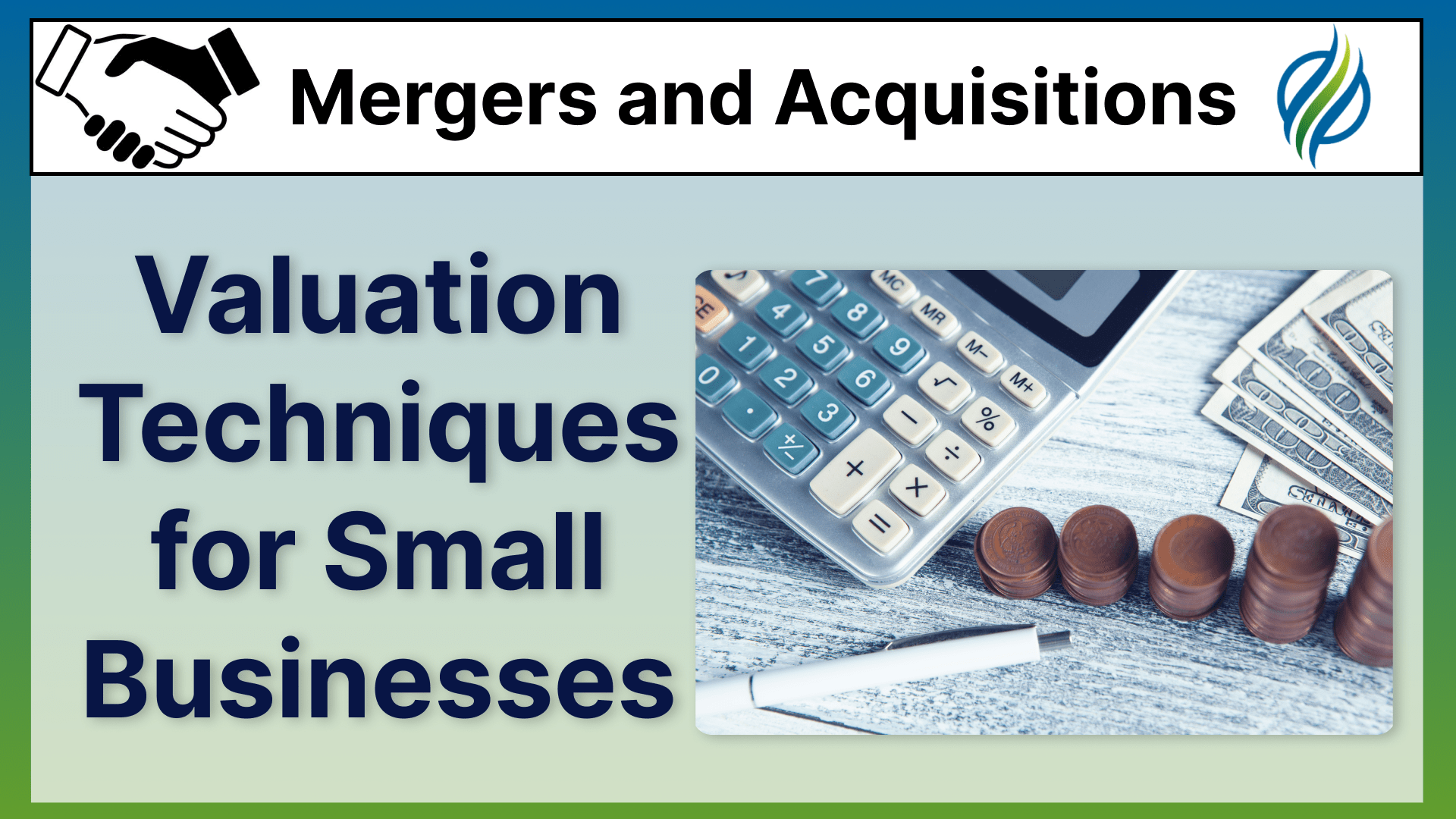Valuing a small business is crucial.
It’s more than just numbers on a paper; it’s about understanding the heart and soul of the enterprise you’ve built from the ground up.
 Key Takeaways
Key Takeaways
- Accurate business valuation is crucial for informed decision-making and strategic planning.
- Choose the right valuation method (DCF, CCA, or Asset-Based) based on your business's nature.
- Professional appraisers provide objective and credible valuations.
- Financial records and market conditions significantly impact your business's value.
- Combining multiple valuation methods can offer a comprehensive view of your business's worth.
Whether you’re considering selling your business, seeking investment, or planning for retirement, an accurate valuation sets the stage for informed decision-making.
It’s the compass that guides you through negotiations, financial planning, and strategic growth.
Without it, you’re navigating the complex world of business blindfolded.
Keep reading to valuate your business like a pro…
 Table of Contents
Table of Contents
Overview of Common Valuation Techniques for Small Businesses

Small business owners have several tools at their disposal for valuation.
Each method shines a light on different aspects of the business, offering insights that are as unique as the enterprises they evaluate.
Let’s delve into the most commonly employed techniques:
1. Discounted Cash Flow (DCF) Analysis:
This technique forecasts your business’s future cash flows and discounts them back to their present value.
It’s like gazing into a financial crystal ball, giving you a glimpse of what your business’s future cash generation could be worth today.
The DCF analysis is perfect for businesses with predictable cash flows and long-term plans.
2. Comparable Company Analysis (CCA):
Here, the value of your business is determined by comparing it to similar businesses that have been sold or valued recently.
It’s akin to appraising a house by looking at recent sales in the neighborhood.
This method works well for businesses operating in industries with plenty of comparable companies.
3. Asset-Based Valuation:
This approach calculates your business’s value based on the value of its assets minus its liabilities.
It’s straightforward—like assessing the worth of a treasure chest by examining the jewels inside and subtracting any debts owed.
This method is particularly suited for companies with significant physical assets.
Each of these techniques has its strengths and fits different business types and stages.
The choice depends on numerous factors, including your industry, business model, and financial health.
Employing the right valuation method not only illuminates your business’s current worth but also paves the way for its future growth and success.
Remember, valuation is not an exact science but a blend of art and analysis.
It requires a deep understanding of your business, industry trends, and the economic landscape.
While these methods provide a solid foundation, consider consulting with a professional appraiser for a nuanced and comprehensive evaluation.
They bring expertise and objectivity to the table, ensuring your valuation reflects the true worth of your labor of love.
In the following sections, we’ll explore each of these valuation methods in detail, offering practical guidance on how to apply them to your small business.
With the right approach and tools, you’ll unlock the true value of your business, setting the stage for future success.
Understanding Business Valuation

Business valuation is a process.
It’s a systematic approach to determine the economic value of an enterprise.
It’s not just about numbers and calculations; it’s about capturing the essence of a business’s worth.
Think of it as putting a price tag on the years of hard work, innovation, and growth that have gone into building your business.
It’s a snapshot of your business’s financial health and potential.
Factors Influencing Business Valuation

Several factors come into play when valuing a business.
They’re like the ingredients in a recipe, each adding its unique flavor to the final valuation:
1. Financial Performance:
This includes revenue, profit margins, cash flow, and other financial metrics.
It’s the backbone of valuation, providing a clear picture of your business’s financial health.
2. Industry Trends:
The industry your business operates in can significantly impact its value.
Factors like market size, growth rate, and competition play a crucial role.
3. Market Position:
Your business’s standing in the market, its brand reputation, and customer base are crucial.
They reflect your business’s ability to attract and retain customers.
4. Future Earnings Potential:
Investors are interested in what your business can achieve in the future.
Your growth prospects and scalability are key drivers of value.
5. Intangible Assets:
These include patents, trademarks, brand equity, and proprietary technology.
They’re the hidden gems that can significantly boost your business’s value.
6. Economic Conditions:
The broader economic environment, including interest rates, inflation, and economic growth, influences valuation.
It sets the stage on which your business operates.
Purpose of Valuing a Small Business

Valuing a small business serves multiple purposes:
1. Selling or Buying a Business:
Whether you’re selling your business or looking to buy one, valuation helps you negotiate a fair price.
2. Raising Capital:
If you’re seeking investment, a solid valuation demonstrates your business’s worth to potential investors.
3. Succession Planning:
Valuation is essential for planning the future of your business, whether passing it on to family members or selling it.
4. Taxation and Legal Purposes:
Accurate valuation is necessary for tax reporting, estate planning, and legal disputes.
5. Strategic Planning:
Understanding your business’s value helps you make informed decisions about growth strategies and investments.
Valuing a small business is not a one-size-fits-all process.
It’s a tailored approach that considers the unique aspects of your business.
It requires a blend of financial analysis, industry insight, and forward-thinking.
By grasping the essence of business valuation, you’re better equipped to navigate the complexities of the business world and steer your enterprise toward success.
Discounted Cash Flow (DCF) Analysis

Discounted Cash Flow (DCF) analysis is a powerful tool in the world of business valuation.
It’s like peering into a crystal ball to see the future financial potential of your business.
DCF analysis estimates the present value of your business based on its projected future cash flows.
It’s a method that acknowledges a simple truth: a dollar today is worth more than a dollar tomorrow.
Steps to Perform DCF Analysis for a Small Business
Performing DCF analysis involves a few critical steps:
1. Estimating Future Cash Flows:
This is the heart of DCF analysis.
You need to forecast your business’s cash inflows and outflows for the coming years.
It’s part art, part science, requiring a deep understanding of your business’s operations, market trends, and growth prospects.
2. Determining the Discount Rate:
The discount rate is the key to unlocking the present value of future cash flows.
It reflects the risk associated with your business and the time value of money.
The higher the risk, the higher the discount rate.
3. Calculating the Present Value of Cash Flows:
Once you have your future cash flows and discount rate, it’s time to bring them back to the present.
This involves applying the discount rate to each year’s projected cash flow, resulting in a present value for each period.
Summing up these present values gives you the total value of your business today.
➤ Learn: Apply present value calulcations to your business the RIGHT WAY!
Advantages and Limitations of DCF Analysis
DCF analysis has its strengths and weaknesses:
Advantages:
-
Future-Oriented: DCF analysis focuses on the future potential of your business, making it particularly relevant for growing businesses with significant investment plans.
-
Flexibility: It allows for different scenarios and assumptions, giving you a range of possible valuations.
Limitations:
-
Complexity: DCF analysis can be complex, requiring detailed financial projections and an accurate discount rate.
-
Sensitivity to Assumptions: The final valuation is highly sensitive to the assumptions made about future cash flows and the discount rate. Small changes can lead to significant differences in the valuation.
Despite its limitations, DCF analysis remains a cornerstone of business valuation.
It provides a forward-looking perspective that is invaluable for understanding the true value of a small business.
When used wisely, it can offer a clear vision of your business’s financial future, guiding strategic decisions and investment plans.
➤ MORE: Free DCF Model Training Guide
Comparable Company Analysis (CCA)
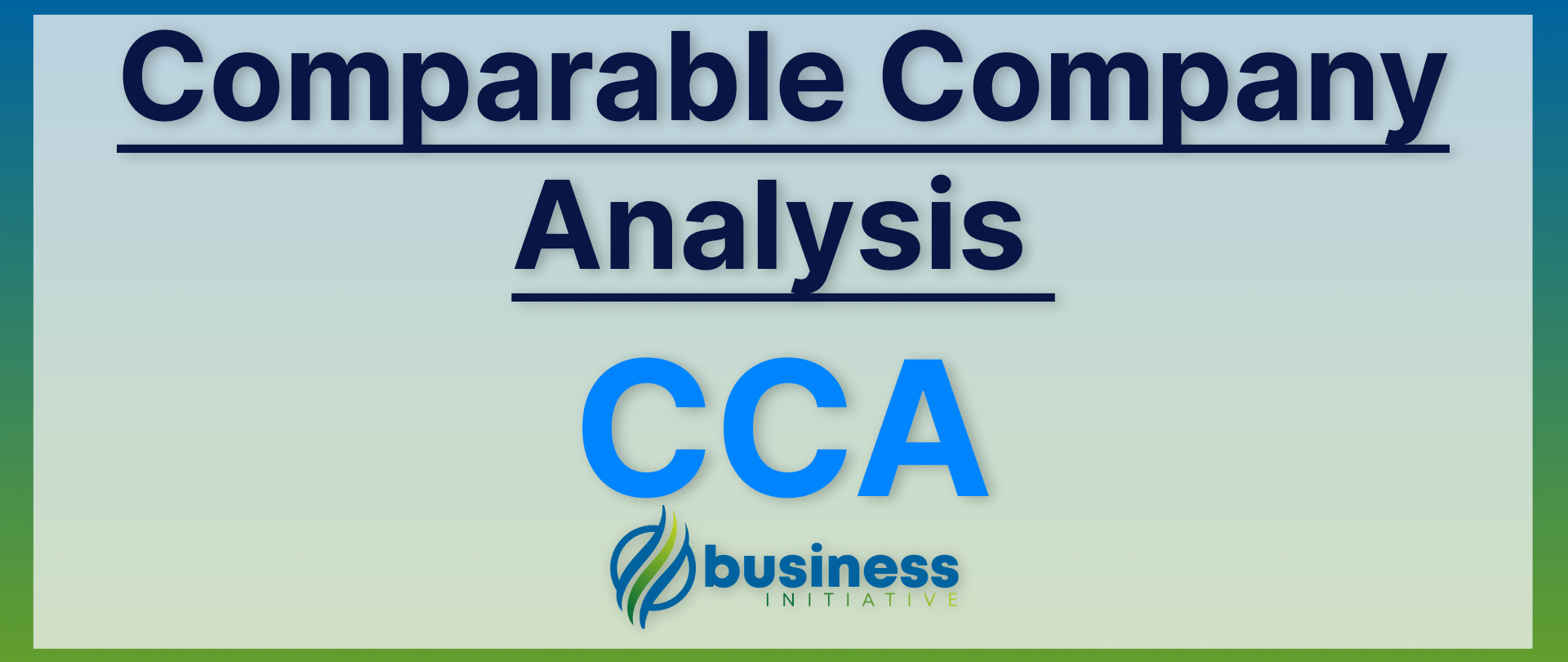
Comparable Company Analysis (CCA) is a valuation method that looks outward.
It’s like finding your business’s doppelgängers in the market and seeing what they’re worth.
CCA compares your business to similar companies that are publicly traded or have been recently sold.
It’s a way of saying, “If they’re worth that much, my business should be too.”
How to Select Comparable Companies
Selecting the right comparables is crucial.
It’s like picking teammates for a basketball game; you want players with similar skills and stats.
Here’s how to do it:
1. Industry:
Start with companies in the same industry as yours.
They should face similar market conditions and challenges.
2. Size:
Look for companies with similar revenue, assets, and market capitalization.
Size matters because it can influence profitability and growth potential.
3. Geography:
Consider the geographic location and market reach.
A local business might not compare well with a global giant.
4. Financial Health:
Choose companies with similar financial health.
Debt levels, profitability, and growth rates should be in the same ballpark.
Adjusting for Size and Industry Differences
Even with careful selection, no two companies are exactly alike.
Adjustments are needed to level the playing field:
1. Size Adjustments:
Smaller companies might have different risk profiles and growth prospects.
Applying size premiums or discounts can help.
2. Industry Adjustments:
Different industries have different valuation norms.
Adjusting for industry-specific factors ensures a fair comparison.
Calculating Valuation Multiples
Valuation multiples are the key to unlocking the value in CCA.
They’re like ratios that compare one financial metric to another, such as price to earnings or enterprise value to EBITDA.
Here’s the process:
1. Select the Right Multiple:
Choose a multiple that’s relevant to your industry and financial performance.
2. Calculate the Multiple for Comparables:
Compute the multiple for each comparable company based on their market data.
3. Apply the Multiple to Your Business:
Use the average or median multiple from your comparables to estimate the value of your business.
Advantages and Limitations of CCA
Advantages:
-
Market-Based: CCA is grounded in real market data, providing a realistic view of what investors are willing to pay.
-
Simplicity: It’s relatively straightforward to apply, especially if you have access to good market data.
Limitations:
-
Availability of Comparables: For niche or unique businesses, finding truly comparable companies can be challenging.
-
Market Volatility: Market conditions can fluctuate, affecting the reliability of the multiples.
CCA offers a practical approach to valuation, especially when combined with other methods.
It provides a market-based perspective that can validate or challenge your own assumptions about your business’s worth.
Like any method, it has its limitations, but when used wisely, it can offer valuable insights into your business’s market value.
➤ MORE: CCA Video Tutorial
Asset-Based Valuation
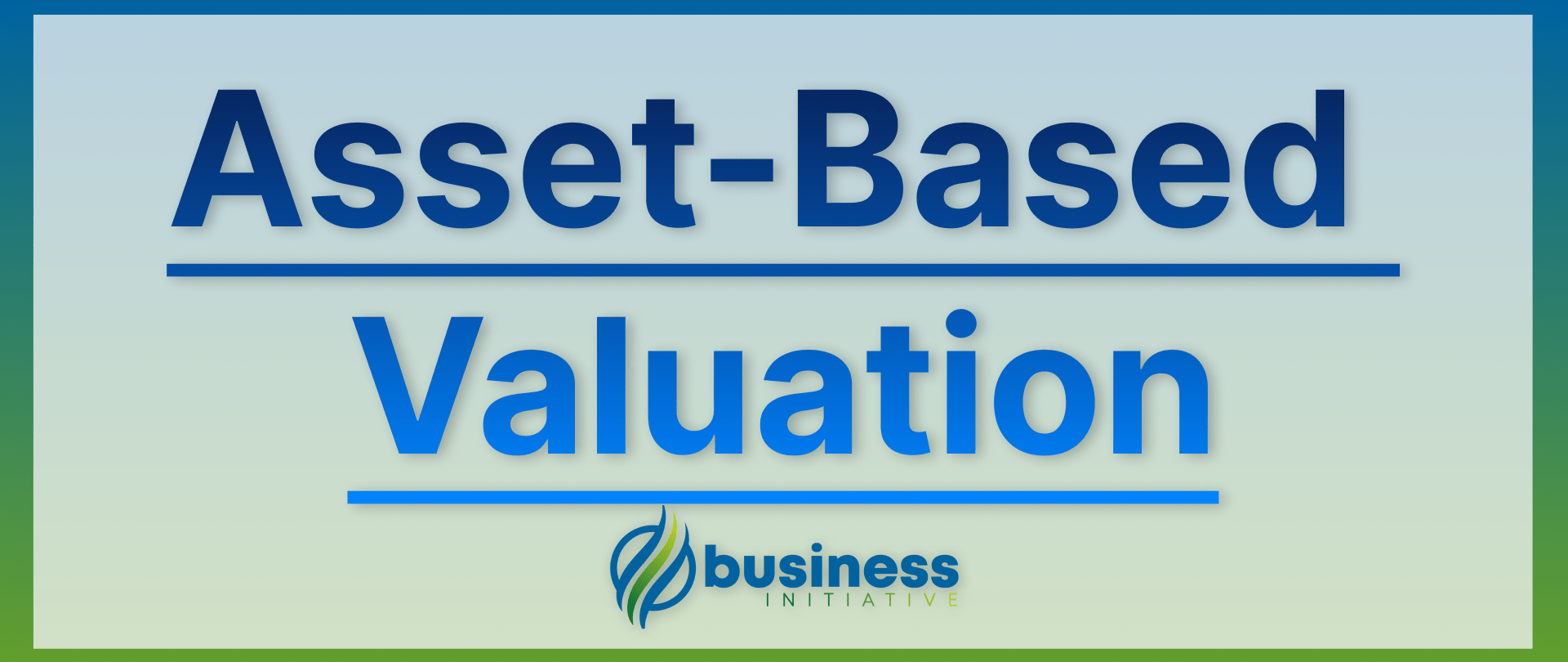
Asset-based valuation is like taking inventory of your business’s worth.
It’s a method that focuses on the tangible and intangible assets of your business.
Think of it as assessing the value of everything your business owns, from the office chairs to the brand reputation.
It’s a straightforward approach that gives a clear picture of what your business’s assets are worth in the market.
Types of Asset-Based Valuation Methods
When it comes to asset-based valuation, there are two main methods:
1. Book Value Method:
This method uses the figures from your balance sheet.
It’s like taking a snapshot of your business’s financial health.
You subtract your liabilities from your assets to get the book value.
It’s a quick and easy way to get a rough estimate of your business’s worth.
2. Liquidation Value Method:
This method is a bit more pessimistic.
It’s about figuring out how much you’d get if you had to sell everything off quickly, usually in a worst-case scenario.
It’s like a fire sale price for your business, often lower than the book value.
Steps to Perform Asset-Based Valuation
Performing an asset-based valuation involves a few key steps:
1. Identify Assets and Liabilities:
Start by listing all your business’s assets and liabilities.
Make sure to include everything, from physical assets to intangible ones like patents or trademarks.
2. Determine the Value of Assets:
Next, you’ll need to assign a value to each asset.
For physical assets, this might be their market value or replacement cost.
For intangible assets, it can be trickier and might require some expert valuation.
3. Subtract Liabilities:
Once you have the total value of your assets, subtract your liabilities.
This gives you the net asset value of your business.
Advantages and Limitations of Asset-Based Valuation
Advantages:
-
Simplicity: It’s a straightforward method that’s easy to understand and apply.
-
Tangibility: It provides a concrete value based on real assets, which can be reassuring for investors or buyers.
Limitations:
-
Underestimation of Value: It might not capture the full value of your business, especially if you have strong intangible assets or growth potential.
-
Not Suitable for All Businesses: It’s more suited to asset-heavy businesses like manufacturing companies than service-based businesses.
Asset-based valuation offers a clear and tangible way to assess the value of your business.
While it has its limitations, it can be a useful tool, especially when combined with other valuation methods.
It provides a solid foundation for understanding the worth of your business’s assets and can be a valuable part of your overall valuation strategy.
Other Common Valuation Techniques
A. Earnings Multiple Approach

The earnings multiple approach is a popular method for valuing businesses.
It involves applying a multiple to a company’s earnings to estimate its value.
The multiple is often based on industry averages or the multiples of comparable companies.
This method is particularly useful for businesses with stable and predictable earnings.
For example, if a company’s earnings are $100,000 and the industry average multiple is 5, the estimated value of the company would be $500,000 ($100,000 x 5).
B. Market Capitalization Method

The market capitalization method is primarily used for publicly traded companies.
It calculates the company’s value based on its current stock price and the total number of outstanding shares.
This method reflects the market’s perception of the company’s value at a given time.
For instance, if a company has 1 million shares outstanding and the current stock price is $10 per share, the market capitalization would be $10 million (1 million shares x $10 per share).
C. Owner’s Earnings Method

The owner’s earnings method, popularized by Warren Buffett, focuses on the cash flow available to the owner after accounting for necessary capital expenditures.
It’s a measure of the company’s true profitability and its ability to generate cash for its owners.
To calculate owner’s earnings, you would start with the company’s net income, add back non-cash expenses such as depreciation, and subtract capital expenditures required to maintain the company’s competitive position.
➤ DISCOVER: How did Warren Buffet calculate owner earnings?
D. Comparison and When to Use Each Technique
-
Earnings Multiple Approach: Best suited for businesses with consistent earnings. It’s a quick and straightforward method but may not capture the full value of businesses with significant growth potential.
-
Market Capitalization Method: Ideal for valuing publicly traded companies. It provides a real-time market value but can be volatile and influenced by market sentiment.
-
Owner’s Earnings Method: Suitable for evaluating the true profitability and cash-generating ability of a business. It’s particularly useful for investors looking for cash flow-oriented investments.
When choosing a valuation technique, consider the nature of the business, the availability of financial data, and the purpose of the valuation.
Each method has its strengths and limitations, and a combination of approaches may provide the most comprehensive view of a company’s value.
Practical Considerations in Business Valuation
A. Role of Professional Appraisers
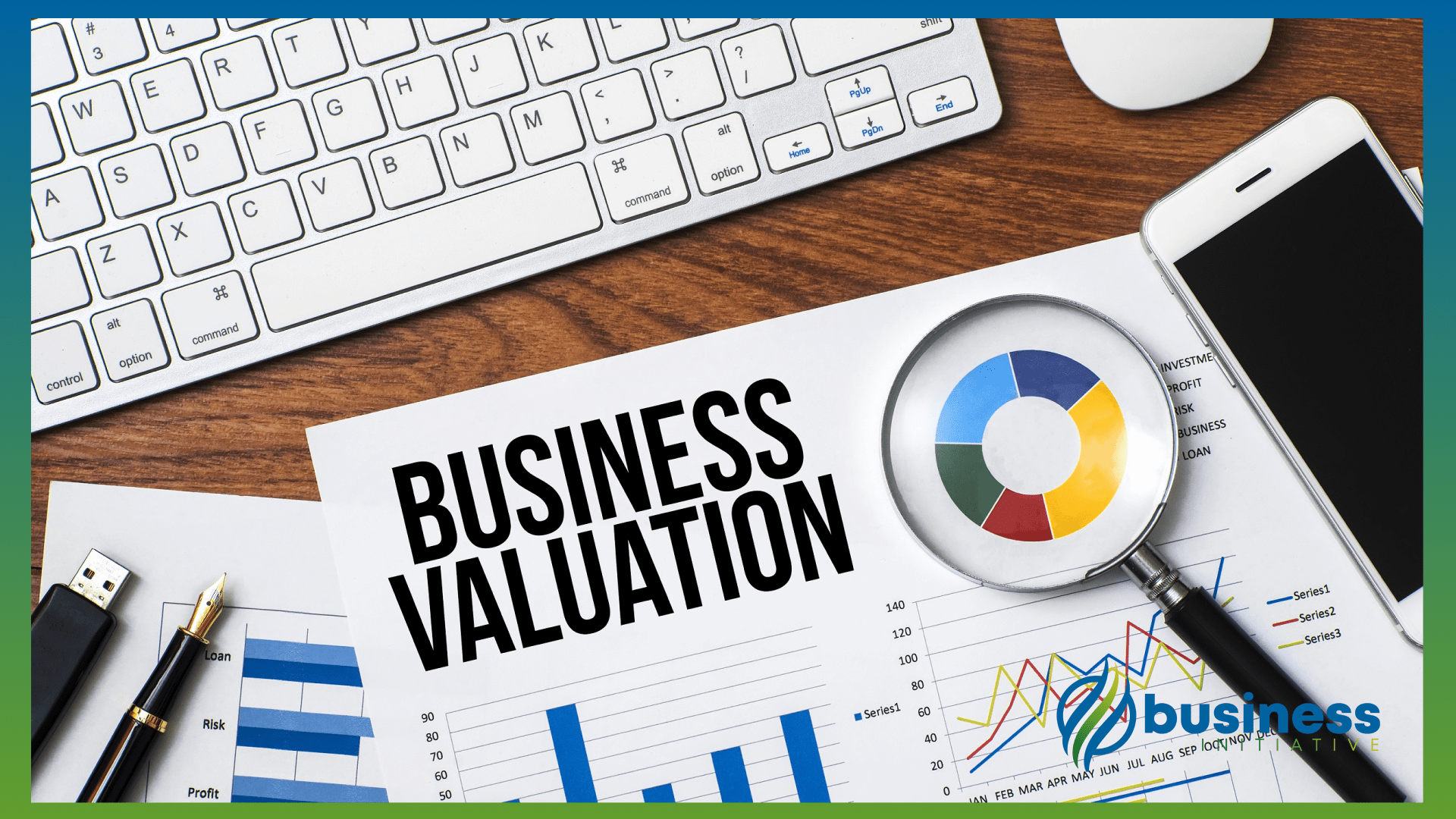
Professional appraisers are the unsung heroes of business valuation.
They bring objectivity, expertise, and a deep understanding of valuation methods to the table.
Their role is crucial in ensuring that the valuation is accurate, credible, and defensible.
Whether you’re negotiating a sale, seeking financing, or dealing with legal matters, a professional appraiser’s opinion can make all the difference.
➤ MORE:
B. Importance of Financial Records and Documentation

Accurate and comprehensive financial records are the backbone of any business valuation.
They provide the data needed to analyze the business’s performance, forecast future earnings, and apply valuation methods.
Keeping meticulous records and documentation is not just good practice; it’s essential for a reliable valuation.
It’s like building a house; you need a solid foundation to ensure it stands the test of time.
➤ LEARN: Which documents can you throw away?
C. Impact of Market Conditions and Industry Trends
The business world is not static, and neither is business valuation.
Market conditions and industry trends can have a significant impact on a company’s value.
Factors such as economic cycles, technological advancements, and regulatory changes can influence investor sentiment and valuation multiples.
Staying attuned to these dynamics is crucial for an accurate and relevant valuation.
D. Legal and Regulatory Considerations

Legal and regulatory considerations play a vital role in business valuation.
Compliance with accounting standards, tax laws, and industry regulations is essential.
➤ MORE: 8 Factors that Impact Your Company’s Worth
In certain situations, such as mergers and acquisitions or legal disputes, the valuation may need to meet specific legal standards.
Understanding these requirements and ensuring the valuation process adheres to them is critical for a smooth and successful outcome.
Business valuation is a multifaceted process that requires careful attention to detail, expertise, and an understanding of the broader market and legal context.
By considering these practical aspects, you can ensure that your business valuation is not only accurate but also meaningful and useful for your specific needs.
Case Studies and Practical Examples
A. Valuation of a Small Retail Business Using DCF Analysis

DCF Valuation Example 1
Let’s consider a small retail business, “Fashion Forward,” specializing in trendy clothing.
To value this business using DCF analysis, we would start by forecasting its future cash flows.
Based on its past performance and market trends, we might project a steady growth in sales over the next five years.
Next, we would determine the discount rate, considering factors like the business’s risk profile and the industry’s average cost of capital.
For this example, let’s assume a discount rate of 10%.
Applying DCF analysis, we would discount the projected cash flows back to their present value and sum them up.
If the total present value of Fashion Forward’s cash flows is $500,000, that would be our valuation of the business.
DCF Valuation Example 2
Consider “Gourmet Delights,” a small specialty food store.
To value this business using DCF analysis, we would forecast its future cash flows based on factors like its unique product offerings and local market demand.
Assuming we project a growth in cash flows due to expanding product lines and increasing customer base, we might estimate its cash flows for the next five years.
With a discount rate of 12%, reflecting the risks associated with the food retail industry, we would discount the projected cash flows to their present value.
If the total present value of Gourmet Delights’ cash flows comes to $750,000, that would be our valuation.
➤ MORE: Free DCF Model Template
B. Valuation of a Service-Based Business Using CCA

CCA Valuation Example 1
Now, let’s look at “Tech Solutions,” a service-based IT consulting firm.
To value Tech Solutions using Comparable Company Analysis, we would first identify similar IT consulting firms that have been recently valued or sold.
We would gather data on their valuation multiples, such as price-to-earnings (P/E) ratios, and calculate the average multiple.
If the average P/E ratio for similar firms is 15, and Tech Solutions has earnings of $100,000, we would estimate its value as $1,500,000 (15 x $100,000).
CCA Valuation Example 2
Take “Bright Minds Tutoring,” a service-based education and tutoring business.
To value Bright Minds using CCA, we would identify comparable tutoring companies that have been recently valued or sold.
After gathering data on their valuation multiples, such as price-to-sales (P/S) ratios, we might find an average P/S ratio of 3.
If Bright Minds has annual sales of $200,000, applying the average P/S ratio would give us a valuation of $600,000 (3 x $200,000).
C. Asset-Based Valuation of a Manufacturing Business
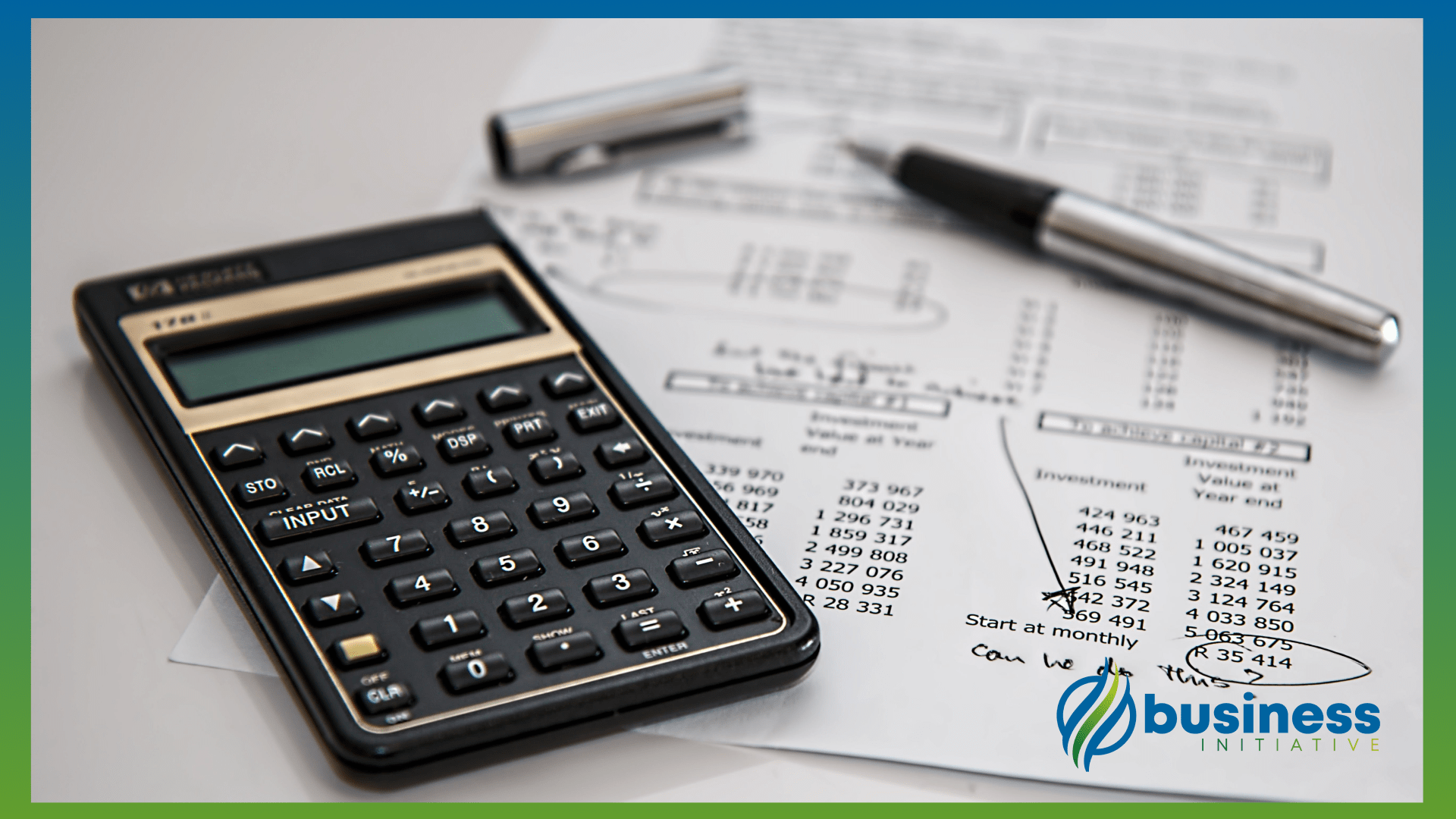
Asset-Based Valuation Example 1
Finally, consider “MetalWorks,” a small manufacturing business with significant machinery and equipment.
For an asset-based valuation, we would start by listing all of MetalWorks’ assets, including its machinery, inventory, and real estate.
We would then determine the market value of each asset, perhaps using recent sales data for similar assets.
After totaling the value of all assets, we would subtract any liabilities to arrive at the Anet asset value.
If MetalWorks has assets worth $2 million and liabilities of $500,000, its asset-based valuation would be $1.5 million.
Asset-Based Valuation Example 2
Consider “EcoPack,” a small business specializing in eco-friendly packaging materials.
For an asset-based valuation, we would list all of EcoPack’s assets, including its manufacturing equipment, patents for sustainable materials, and inventory.
After determining the market value of each asset, we would subtract any liabilities.
If EcoPack’s total assets are valued at $1.2 million and its liabilities amount to $300,000, the net asset value, and thus the valuation of the business, would be $900,000.
Each of these case studies demonstrates a different approach to valuing a small business, highlighting the importance of selecting the appropriate valuation method based on the business’s nature, circumstances, and market position.
In Summary…
We’ve journeyed through the world of business valuation, exploring various methods tailored to the diverse landscape of small businesses.
From the forward-looking Discounted Cash Flow (DCF) analysis to the market-oriented Comparable Company Analysis (CCA) and the tangible Asset-Based Valuation, each technique offers a unique lens to view the worth of a business.
Selecting the right valuation method is crucial.
It’s like choosing the right tool for a job; using a hammer to screw in a bolt won’t yield the best results.
The best method for you will align with your business’s nature, industry, and objectives.
A retail store might find DCF analysis enlightening, while a manufacturing business might lean towards asset-based valuation.
It’s about finding the fit which accurately reflects your business’s value.
Navigating the complexities of business valuation can be daunting.
It’s a task that demands not only a deep understanding of finance but also an intimate knowledge of your business and industry.
This is where professional appraisers come in.
➤ MORE:
They bring expertise, objectivity, and a wealth of experience to the table.
Seeking their advice can ensure that your valuation is not only accurate but also credible and defensible.
Valuing a small business is a multifaceted process that requires careful consideration of various factors and methods.
It’s an essential step in understanding the true worth of your business and making informed decisions for its future.
So, take the time to choose the right valuation method, and don’t hesitate to seek professional guidance to navigate this crucial journey successfully.
Searching for the right valuation method for your business?
Schedule a consultaiton call with Business Initiative today!
We can help you find the perfect way to valuate your business to find its true value.
If you have any other questions or think there is something we could be doing better please reach out using our contact form or by sending us a DM on X (Twitter).
Stay in touch by following us on X and subscribe to the Initiative Newsletter to get the most up-to-date business tips to navigate the world of modern business…
Sources and Additional Resources
Professional Valuation Services
When seeking professional valuation services, it’s essential to choose reputable and experienced providers.
Here are a few well-regarded firms:
1. Deloitte Valuation Services:
Offers a wide range of valuation services, including business enterprise valuations, intangible asset valuations, and fairness opinions.
2. PwC Valuation & Business Modelling:
Provides valuation services for mergers and acquisitions, financial reporting, tax purposes, and dispute resolution.
Specializes in valuations for transactions, tax planning, financial reporting, and litigation support.
Recommended Reading and Software Tools
To deepen your understanding of business valuation, consider exploring the following resources:
Books:
- Valuation: Measuring and Managing the Value of Companies by McKinsey & Company Inc., Tim Koller, Marc Goedhart, and David Wessels.
- The Art of Company Valuation and Financial Statement Analysis by Nicolas Schmidlin.
Software Tools:
1. ValuAdder: A comprehensive business valuation software that offers a range of valuation methods and financial analysis tools.
2. BizEquity: An online platform that provides business valuation services and market insights.
Online Calculators and Templates
For those who prefer a DIY approach or need a quick estimate, online calculators and templates can be useful:
1. Discounted Cash Flow Calculator: Investopedia’s DCF Calculator provides a simple way to estimate the value of a business using the DCF method.
2. Business Valuation Template: Score’s Business Valuation Template offers a straightforward Excel template for calculating the value of a business based on its financials.
➤ MORE: Business Valuation Excel Template: 10 Simple Steps to Success
Whether you choose to work with professional services, dive into literature, or utilize software tools, the key is to find the resources that best fit your needs and provide the most accurate and insightful valuation for your business.
Sources
- The Balance - Why Is a Business Valuation Important?
- Investopedia - Understanding Business Valuation
- M&A Source - The Importance of Business Valuation
- The Balance Small Business - Business Valuation Methods
- Corporate Finance Institute - Valuation Methods
- Harvard Business School - How To Value A Company: 6 Methods and Examples
- Corporate Financial Institute - Valuation Overview
- Kroll - Business Valuation - The Basics
- CFO Share - Key Factors Influencing Business Valuation
- US Bank - 5 factors that can affect business valuation
- American Express - Business Valuation: Importance, Formula and Examples
- Smith Schafer - 10 REASONS FOR A BUSINESS VALUATION
- Forbes - Understanding Business Valuation: What Makes A Company Valuable?
- Corporate Finance Institute - What is DCF Valuation?
- Business Initiative - What is Net Present Value (NPV)
- Corporate Finance Institute - Discounted Cash Flow (DCF)
- Pitch Book - Discounted cash flow (DCF) analysis: The ultimate guide
- Fair Value Academy - Step By Step Guide On Discounted Cash Flow Valuation Model
- Corporate Finance Institute - DCF Analysis Pros & Cons
- Corporate Finance Institute - DCF Model Training Free Guide
- Smart Sheet - The Advantages and Limitations of Discounted Cash Flow Analysis
- Investopedia - Comparable Company Analysis (CCA)
- Wall Street Prep - Comparable Company Analysis (CCA)
- Corporate Finance Institute - How to Choose Comparable Companies
- Wall Street Mojo - Comparable Company Analysis
- Motley Fool - 3 Ways to Value Any Small Business
- Corporate Finance Institute - Types of Valuation Multiples
- Wall Street Oasis - Types of Valuation Multiples
- Macabacus - Valuation Multiples
- Breaking Into Wall Street - Comparable Company Analysis (CCA) Tutorial
- Corporate Finance Institute - Comparable Company Analysis
- Finance Strategists - Asset-Based Valuation
- Corporate Finance Institute - Asset-Based Valuation
- SuperMoney - Asset-Based Valuation: Definition, Calculation, and Practical Applications
- Wall Street Mojo - Asset-Based Valuation
- Corporate Finance Institute - Asset Valuation
- Evista - BUSINESS VALUATION: THE ASSET-BASED APPROACH
- Fit Small Business - How to Value a Business: The Ultimate Guide
- Investopedia - Asset-Based Approach: Calculations and Adjustments
- eFinance Management - Asset-Based Valuation – Meaning, Methods, Pros, Cons, and Challenges
- Investopedia - Earnings Multiplier
- Corporate Finance Institute - Earnings Multiplier
- SuperMoney - Earnings Multiplier: Definition, Calculation, and Real-World Examples
- Investopedia - Market Capitalization
- Corporate Finance Institute - Market Cap
- SuperMoney - Owner Earnings Run Rate: Definition, Calculation, Pros & Cons
- Warren Buffett's Shareholder Letter - Owner's Earnings
- Old School Value - Owner Earnings Guide
- Wall Street Oasis - Valuation Methods
- Startups.com - How to Value a Startup — 10 Real-World Valuation Methods
- Investopedia - Appraisal
- American Society of Appraisers
- National Association of Certified Valuators and Analysts
- IRS - Recordkeeping
- IRS - Why should I keep records?
- Motley Fool - Best Practices for Small Business Record-Keeping
- Benchmark International - WHAT MARKET CONDITIONS MIGHT IMPACT MY COMPANY VALUATION?
- Intelek Business Valuations - How Higher Interest Rates Have Impacted Your Business’ Value
- McKinsey & Company - A closer look at valuation
- Contellation Real Estate Group - The Anatomy of a Valuation: 8 Factors that Impact Your Company’s Worth
- Startup Nation - Raising Capital for Your Startup: Top Legal Considerations to Know
- Legal Match - Business Valuation Laws
- Investopedia - Discounted Cash Flow DCF Formula
- Corporate Finance Institute - DCF Model Template
- Stable Bread - How to Value a Company Using the Discounted Cash Flow Model
- Corporate Finance Institute - Comparable Company Analysis
- Street of Walls - Comparable Company Analysis
- Corporate Finance Institute - Asset-Based Valuation
- Analyst Prep - Asset-based Valuation Models
- Forbes - How To Choose The Right Valuation Method For Your Startup
- Valutico - Company Valuation Methods—Complete List and Guide
- American Society of Appraisers
- National Association of Certified Valuators and Analysts
- Valuation & Modeling
- PwC Valuation & Business Modelling
- KPMG Valuation Services
- Valuation: Measuring and Managing the Value of Companies
- The Art of Company Valuation and Financial Statement Analysis
- ValuAdder Business Valuation Software
- Business Valuation Excel Template: 10 Simple Steps to Success
- BizEquity Business Valuation Platform


